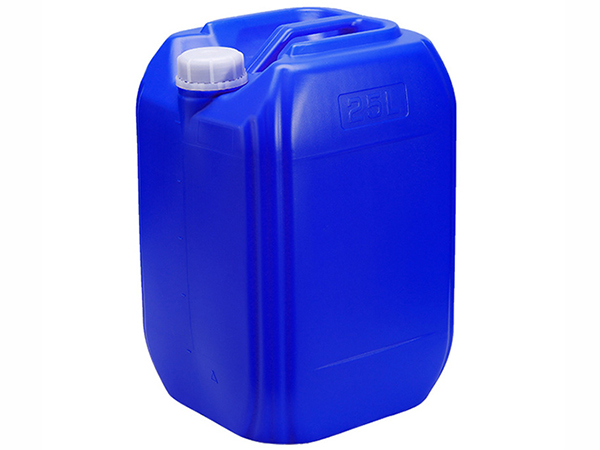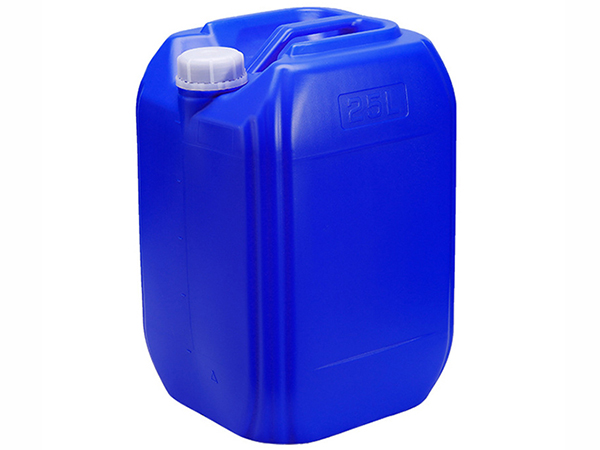
The purpose of clothing washing is to enhance the stability of clothing. By washing with water, it is possible to shrink in advance and stabilize the size. The second is to enhance the aesthetics of clothing. By using different washing methods, various colors and textures can be washed, which is highly favored by people and increases the added value of clothing. So, what chemicals are used in the washing process of clothing

What chemicals are used for clothing washing
1、 Acid-base salt
1. Acetic acid: Acetic acid is commonly used in the washing process of clothing to adjust the pH, or in combination with acidic cellulase for hair removal, hair removal, etc
2. Oxalic acid: Oxalic acid can be used to clean rust spots on clothing, as well as to remove residual potassium permanganate solution from clothing, or to unbleach clothing after rinsing
3. Caustic soda (sodium hydroxide): Caustic soda should not come into contact with the skin and can cause serious burns. Caustic soda can completely dissolve various animal fibers such as silk and wool; It is generally used for the scouring of natural fiber such as cotton, which can remove impurities in the fiber, and can also be used for the mercerizing treatment of cotton fibers. It is used as desizing agent and bleaching alkali in garment washing, and has a stronger effect on washing light colors than soda ash
4. Soda: When some clothing needs to be washed with water to lighten the color, it can be boiled with soda ash. It can be used to adjust the acidity and alkalinity of the solution
5. Sodium sulfate: commonly known as mirabilite. It can be used as a dyeing promoter for cotton dyeing with direct dyes, reactive dyes, sulfide dyes, and other dyes. These dyes are specifically easy to dissolve in the configured dye solution, but are not easy to dye cotton fibers. Due to the difficulty in absorbing dyes completely, there are many residual dyes in the foot water. Adding sodium sulfate can reduce the solubility of dyes in water, thereby increasing their coloring ability. In this way, the amount of dye used can be reduced, while the resulting color deepens, improving the dye uptake and color depth
6. Sodium chloride: Table salt is commonly used as a dye promoter for direct, reactive, sulfurized dyes when dyeing deep colors, replacing sodium sulfate. Every 100 parts of table salt is equivalent to 100 parts or 227 parts of anhydrous sodium sulfate
2、 Water softener, pH regulator
1. Sodium hexametaphosphate: It is a good water softener. It can save dyes and soap, achieving the effect of water purification
2. Disodium hydrogen phosphate: In clothing washing, it is usually used in combination with sodium dihydrogen phosphate to regulate the pH value of neutral cellulase
3. Trisodium phosphate: generally used as a hard water softener, scale remover, and metal cleaner. Used as a scouring aid for cotton fabrics, it can prevent the consumption of caustic soda in the scouring solution from being consumed by hard water, promoting the scouring effect of caustic soda on cotton fabrics
3、 Bleach
1. Sodium hypochlorite: Sodium hypochlorite bleaching generally needs to be carried out under alkaline conditions, and this bleaching method is currently almost phased out
2. Hydrogen peroxide: Usually, the temperature required for fabric bleaching with hydrogen peroxide is between 80-100 ℃, which requires high equipment requirements and higher cost compared to sodium hypochlorite bleaching. It is suitable for advanced and high-quality products
3. Potassium permanganate: Potassium permanganate has specialized strong oxidizing properties and stronger oxidation ability in acidic solutions, making it an excellent oxidant and bleach. In clothing washing, it is used for color removal and bleaching, such as spraying PP (monkey), hand sweeping PP (monkey), and frying PP (acid pickling, stir frying snowflakes), which are particularly important chemicals
4、 Reducing agent
1. Big soda: commonly known as Haibo. In clothing washing, clothing that is rinsed with sodium hypochlorite needs to be unbleached with baking soda. This is because baking soda has strong reducibility and can reduce substances such as chlorine gas
2. Insurance powder: commonly known as low sodium sulfite, it is a strong reducing agent used for stripping dyes. It is most stable at a pH value of 10
3. Sodium metabisulfite: Due to its low price, it is widely used in the clothing washing industry for neutralization after potassium permanganate bleaching
5、 Biological enzyme
1. Desizing enzyme: Denim clothing contains a large amount of starch or denatured starch slurry. The desizing effect of desizing enzyme lies in its ability to catalyze the hydrolysis of starch macromolecular chains, generating some low molecular compounds with relatively small molecular weight, low viscosity, and high solubility. The purpose of desizing is achieved by removing the hydrolysis products through water washing. Amylase can also remove mixed slurries mainly composed of starch. The characteristic of desizing enzyme is its high starch conversion ability, which can completely destroy starch without damaging cellulose. This is a unique advantage of enzyme specificity. It can provide comprehensive desizing function, which helps to improve the stability and smoothness of clothing post-processing
2. Cellulase: Cellulase is selectively used for cellulose fibers and derivatives of cellulose fibers, which can improve the surface performance and color light of textiles, produce a vintage effect, and remove dead cotton and fuzz on the surface of fabrics; It can degrade cellulose fibers and achieve a soft and comfortable feel for the fabric. Cellulase is soluble in water and has good compatibility with wetting agents and detergents. However, when it comes to reducing agents, oxidants, and enzymes, its efficiency will decrease. According to the requirements for the pH value of the water bath during the washing process, cellulases can be divided into acidic cellulases and neutral cellulases
3. Laccase: Laccase is a copper containing polyphenol oxidase that can catalyze the redox reaction of phenolic substances. It can be used for decolorization of indigo dye in denim. Laccase can catalyze the oxidation of insoluble indigo dyes, so that indigo molecules can be decomposed and fade, thus changing the appearance of denim dyed with indigo dyes. Laccase can be used in denim washing in two aspects: ① to replace or partially replace cellulase for enzyme washing; ② Replace sodium hypochlorite rinse. By utilizing the specificity and efficiency of laccase on indigo dyes, rinsing can achieve the following effects: ① giving the product a brand new appearance, style, and unique finishing effect. ② Enhance the degree of grinding and washing of products, and provide a fast grinding and washing process Maintain the best strength denim finishing process. ④ Easy to operate, with good reproducibility. ⑤ Green production
6、 Surfactants
Surfactants are substances with fixed hydrophilic and lipophilic groups that can be oriented on the surface of a solution and significantly reduce the surface tension of the solution. Surfactants have a wide range of applications in industrial production and daily life, including wetting, solubilization, emulsification, foaming, defoaming, dispersion, and decontamination
1. Wetting agent: Non ionic wetting agents are not suitable for co bathing with sensitive substances such as enzymes. During the desizing process, they can increase the penetration of enzyme molecules into the fabric and improve the effectiveness of the action; Adding non ionic wetting agents during the softening process can significantly improve the softening effect
2. Anti dyeing agent: Anti dyeing agent is composed of polyacrylic polymer compounds and non ionic surfactants, which can prevent indigo dyes, direct dyes, and reactive dyes from dyeing clothing labels, pockets, embroidery, decals, and other parts during the washing process. It can also prevent staining and back dyeing of printed and dyed fabrics during the washing process. Suitable for the entire process of enzymatic washing of denim clothing. Anti dyeing agents not only have strong anti staining effects, but also have extraordinary desizing and cleaning functions. When used in the same bath with cellulase, they can promote cellulase, greatly improve the flower degree of denim clothing washing, shorten washing time, and reduce enzyme dosage by 20% -30%. The composition and composition of anti dye products produced by various manufacturers vary, and currently there are various dosage forms of products sold, such as powders and water-based agents
3. Detergent (soap oil): Not only does it have strong anti staining effect, but it also has extraordinary desizing and cleaning functions. When used for cleaning casual clothing before enzyme washing, it can remove floating colors and improve permeability. When used for cleaning after enzyme washing, it can obtain a clean and bright cloth surface luster. Jian oil, as the most common detergent in clothing washing, its performance can be evaluated by testing its dispersing power, emulsifying power, and detergency
7、 Additives
1. Fixing agent: After dyeing cellulose fibers with direct or reactive dyes, if washed directly, it will cause color shift of unfixed dyes. In order to prevent this phenomenon from occurring and achieve the required color fastness, it is usually necessary to undergo color fixation treatment after dyeing textiles. Fixing agents are an important class of compounds that improve the binding fastness of dyes to textiles. The existing fixing agents are divided into: dicyandiamide fixing agents and polymer quaternary ammonium salt fixing agents
2. Bleaching aids
① Spandex chlorine bleach care agent: chlorine bleach care agent can be used in the same bath with sodium hypochlorite to prevent damage to elastic fibers caused by bleaching and yellowing of fabrics after washing
② Hydrogen peroxide bleaching stabilizer: When hydrogen peroxide is bleached under alkaline conditions, it can also cause oxidation damage to cellulose, resulting in a decrease in fiber strength. Therefore, during hydrogen peroxide bleaching, it is necessary to manipulate the effective decomposition of hydrogen peroxide and generally add stabilizers to the bleaching solution
③ Hydrogen peroxide bleaching synergist: Used together with caustic soda and hydrogen peroxide, it has a special effect on the bleaching and decolorization of sulfide black dyed denim clothing
④ Manganese remover (neutralizer): After potassium permanganate treatment, there is residual manganese dioxide on the surface of denim fabric, which must be clear and clean in order to give the bleached fabric a bright color and appearance. This process is also known as neutralization. The most important component is the reducing agent
3. Resin finishing agent
The function of resin finishing: Cellulose fiber fabrics, including cotton, linen, and viscose fabrics, are comfortable to wear, have good moisture absorption and breathability, but are prone to deformation, shrinkage, wrinkling, and poor stiffness. Because under the action of water and external force, relative slip occurs between amorphous macromolecular chains within the fiber. When water or external force is removed, relative slip occurs between macromolecular chains that slip. When water or external force is removed, macromolecules that slip cannot return to their original positions, resulting in wrinkles. After resin treatment, the clothing is neat and not prone to wrinkling or deformation, and can be ironed free. In addition to wrinkle resistance, the process of picking and pressing creases in denim clothing washing also requires resin shaping, which can maintain the wrinkling effect for a long time. Resin finishing technology should have the characteristics of pleating and color fixation in clothing washing
Commonly used resin finishing agents: ① Crepe resin for cat whiskers. ② Resin finishing catalyst. ③ Fiber protective agent. ④ Additives that improve the strength of fabrics
8、 Antistatic agent
The harm of static electricity: clothing adsorbs on the human body; Fabric is prone to adsorbing dust; Underwear has a needle pricking sensation; Synthetic fiber fabrics generate electric shock
Antistatic agent products: antistatic agent P, antistatic agent PK, antistatic agent TM, antistatic agent SN
9、 Softener
1. The Role of Softeners
When the softener is applied to the fiber and absorbed, it can improve the luster of the fiber surface; Applying it to the surface of textiles can improve softness. Softeners, as a lubricant, are adsorbed on the surface of fibers, thereby reducing interactions between fibers and improving their smoothness and migration rate. Softeners have the following characteristics: ① Stable performance during processing. ② Can the whiteness and fixation of clothing be reduced? ③ When heating, it should not turn yellow or discolor. ④ Storage for a period of time may not cause changes in the color and feel of the product
2. Softener products: cold water decoction pieces, hot melt non ionic soft pieces, fluffy softener, bright softener, moisturizing soft oil, anti yellowing silicone oil, anti yellowing softener, penetrating silicone oil, smoothing silicone oil, hydrophilic silicone oil
10、 Fluorescent whitening agent
Fluorescent brightener is a preparation that utilizes optical effects to increase the whiteness of fabrics under sunlight, hence it is also known as an optical brightener and is a nearly colorless dye. The fluorescent whitening agent used for clothing washing and whitening is mainly cotton whitening agent, which is divided into blue light whitening agent and red light whitening agent
11、 Other chemical agents
Grinding agent: used for stone grinding treatment of light and thin fabrics, which can replace pumice to avoid damage to the fabric surface and the occurrence of stone marks and scratches
Stone grinding powder: The best substitute for pumice, with better results than abrasive agents
Sand washing powder: The surface produces a fluffy effect
Stiffener: enhances the sense of heaviness
Hairing agent: enhances the fuzzing feel of clothing and is soluble with enzyme preparations
Coating: During the operation, according to the weight and effect requirements of the clothing, different proportions of coating are mixed with water, and 10% fixing paste is added to create irregular patterns in the areas where the clothing needs to be sprayed by spraying, dripping, or drawing with a pen
About
Brief introduction Application Certificate Laboratory Connectproduct
Post finishing agent Enzymatic water Brightener Printing/Coating Additives MoreNews
Dynamic Lnformation Common
Mobile website

TRL:+86 0769-88124837
Chinese mailbox:dgtshdrl@163.com
English mailbox:postmaster@tianshengchem.com
Guangdong Tiansheng Environmental Protection New Material Technology Co., Ltd. Copyright © 2023 all rights reserved